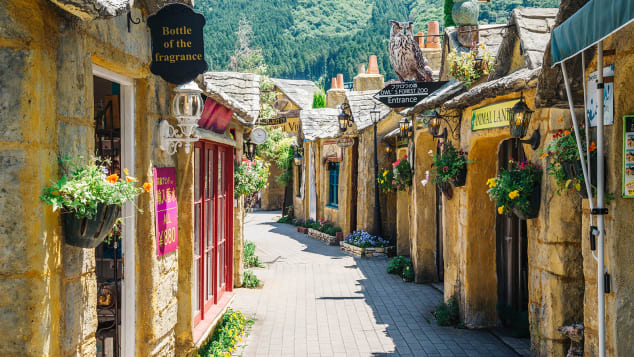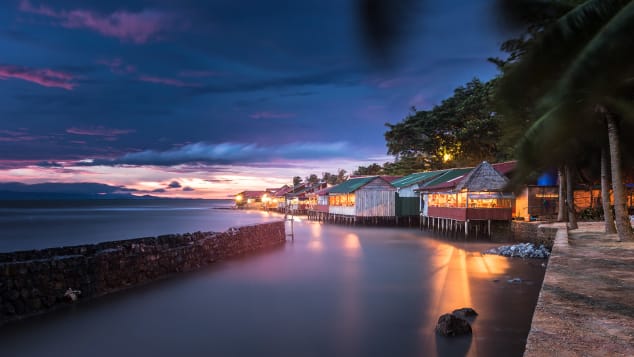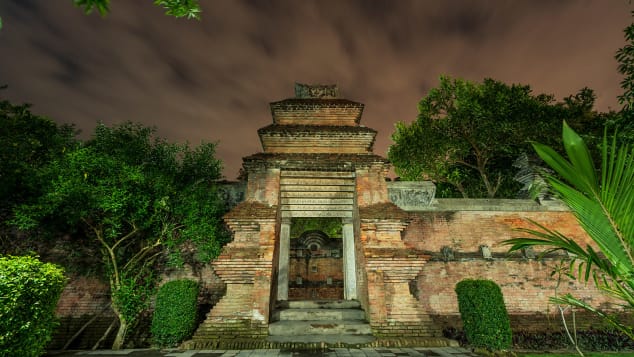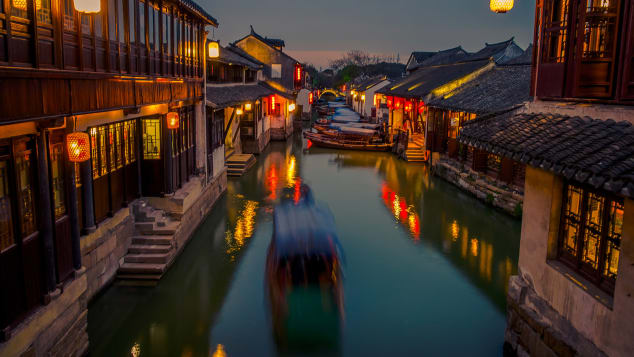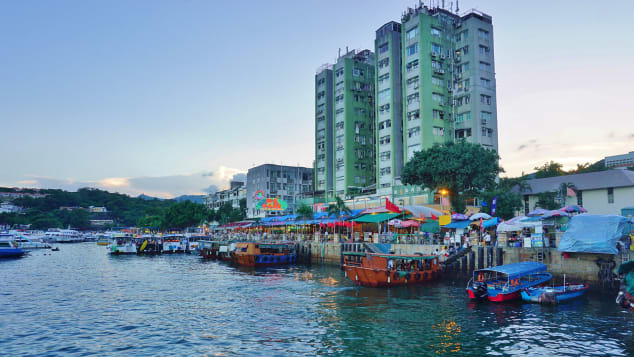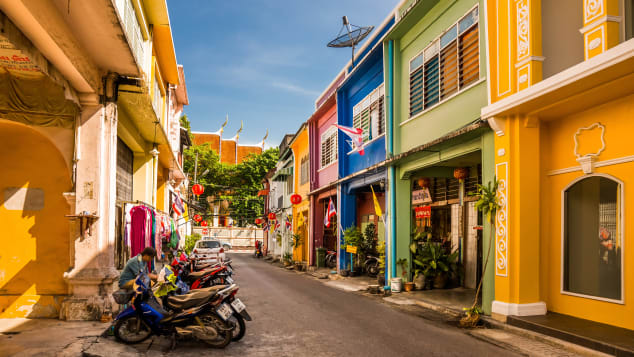13 of Asia's most picturesque towns
- Tuesday - 03/09/2019 14:29
- Close page
With its tropical islands, rice paddies, tea plantations, rugged mountains and sprawling megacities, Asia is a wonderland of diverse destinations.
Hoi An, Vietnam
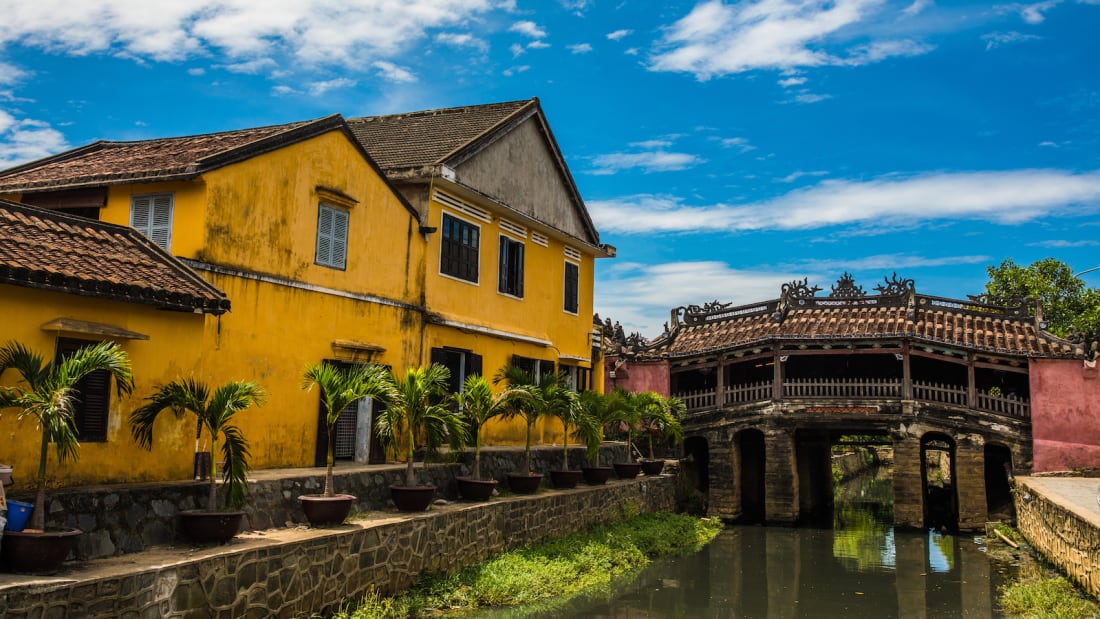
Hoi An's Old Town, a UNESCO-listed heritage site.
Christian Berg
Located on the central coast of Vietnam, Hoi An's Old Town is a heaven for photographers, foodies and architecture lovers.
Added to the UNESCO World Heritage list in 1999, the former French colonial trade port has been one of the most commercially vital towns in Vietnam since the 16th century.
And thanks to centuries as an important trade hub, the narrow streets of Old Town Hoi An feature rows and rows of charming mustard-hued merchant houses -- though many have since been transformed into low-key restaurants, bars, design boutiques and tailors' shops.
Adding to the atmosphere, lush foliage spills from the rooftops and, come evening, romantic silk lanterns light up the town.
Yufuin, Japan
Yufuin's quaint floral village.
Shutterstock
A tiny town in Oita Prefecture on Japan's southwestern Kyushu Island, Yufuin is best known for its peaceful atmosphere, onsen baths (hot springs), tile-roofed Japanese shophouses and pristine natural scenery, with Mount Yufu as a dramatic backdrop.
In autumn, travelers can expect an abundance of radiant orange and red leaves, while spring delivers soft and ethereal cherry blossoms galore.
Onsens are another major draw. Travelers can experience them when staying in a ryokan (a local guesthouse), such as Yufuin Iyotomi, or in one of the public baths such as Shitanyu on Lake Kinrinko at the eastern edge of town.
A stroll along Yunotsubo Street, which cuts neatly through the center of Yufuin, is a pleasant way to spend the morning thanks to countless artsy boutiques, tea shops and restaurants.
George Town, Malaysia
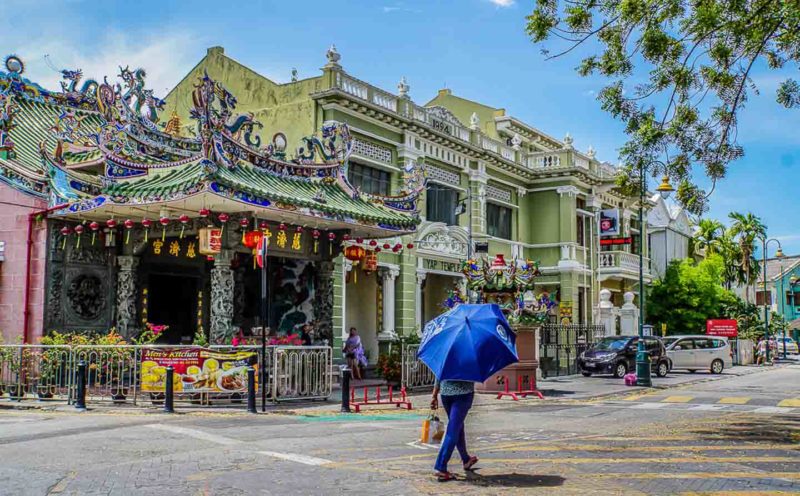
Penang's capital offers culture, cuisine and so much more.
Designated a UNESCO World Heritage site, the historic quarter of George Town in Penang, Malaysia, showcases multi-cultural influences.
The region's heritage can be traced back almost 500 years, when the former British colony was a prominent hub of trade on the Malacca Strait, enabling cultural exchange between Malay, Chinese, Indian and European residents.
As a result, George Town retains its unique character -- evidenced by the mix of pastel-painted shophouses and Chinese mansions, European government buildings, diverse religious buildings, festivals, music, food and fortresses.
City of Vigan, Philippines
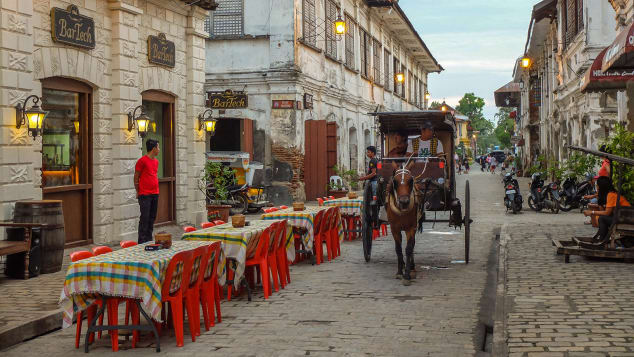
Vigan was established by the Spanish in 1572.
Shutterstock
One of the best places to experience Spanish colonial-era architecture in Asia, the city of Vigan is situated on the western coast of Luzon island in northwestern Philippines.
Now a UNESCO World Heritage City, Vigan was established by the Spanish in 1572.
Conquistador Juan de Salcedo developed a grid-like plan for the city, churches, schools and grand mansions with dazzling capiz-shell windows and dark wood interiors.
Luang Prabang, Laos
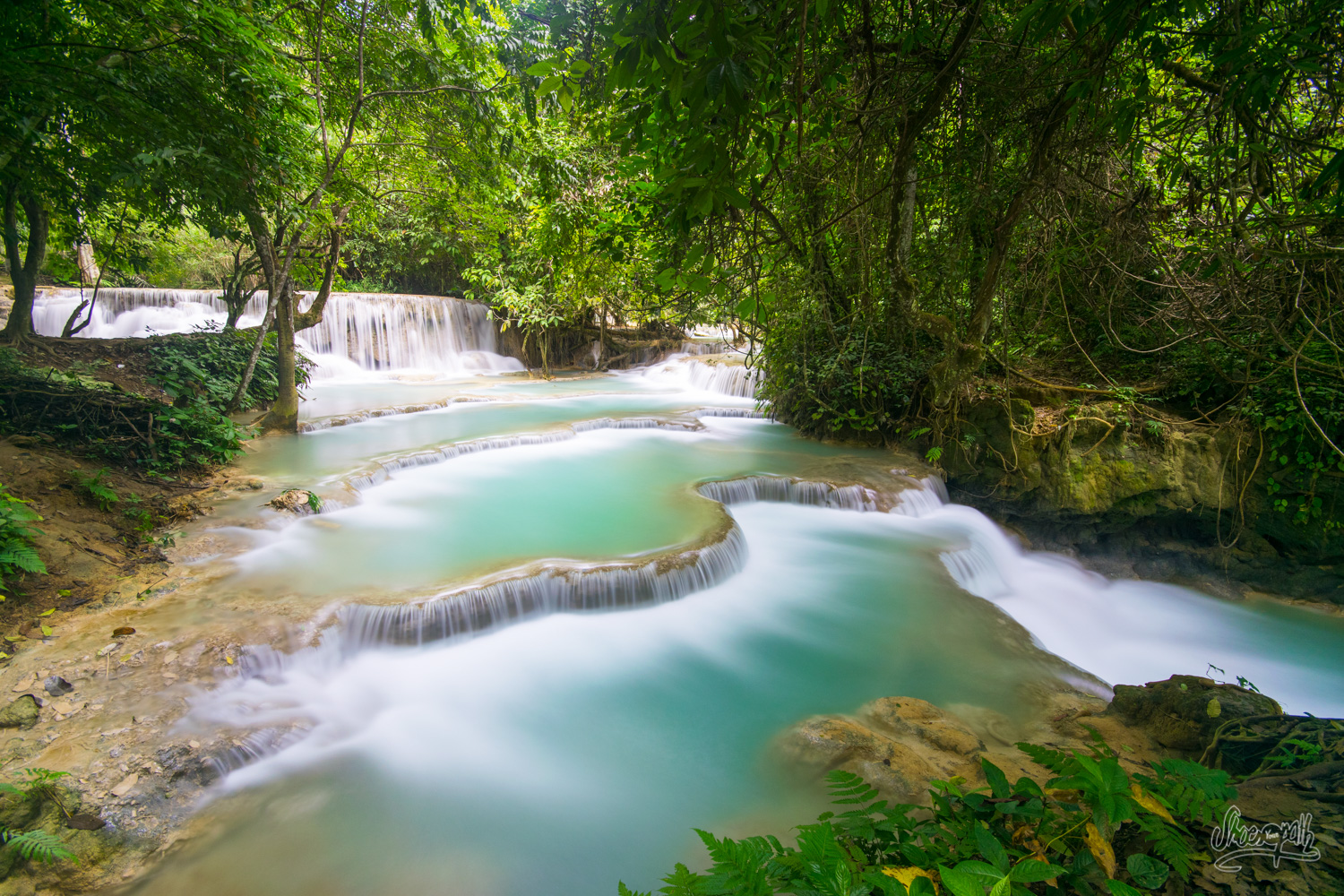
The former capital of Laos, beautiful Luang Prapang is home to colorful temples and dramatic natural scenery.
Often hailed as one of the most spiritual places in Southeast Asia, Luang Prabang makes a dramatic first impression.
Sitting at the bottom of a valley in central Laos, the town is hugged by mountains while the Nam Khan River cuts through the center.
Serving as the seat of the first kingdom in Laos from the 14th to 16th centuries, Luang Prabang was long a strategic location on the Silk Route.
It was later taken by the French in the late 1890s and, over time, the harmonious intermingling of European and Laotian architecture created a distinct townscape.
Kampot, Cambodia
A serene coastal town, Kampot is most famous for its pepper.
Shutterstock
Though the first stop in Cambodia is usually Angkor Wat -- for good reason -- more and more travelers are falling for the charms of Kampot.
Best known for its river scenery and pepper farms, the serene coastal town has garnered a reputation as one of the prettiest small towns in the region, thanks to colorful French colonial shophouses, pedestrian-friendly streets and plenty of outdoor activities.
The lengthy list covers everything from kayaking and biking to mountain treks, river cruises, paddleboarding and more.
Meanwhile, a day trip through the countryside reveals lush paddy fields, cave temples, waterfalls, mirrored salt fields and pepper farms where you can sample the region's most famous -- and aromatic -- export.
Kota Gede, Indonesia
Kotagede's Gate of The Kings Tomb.
Shutterstock
Among the oldest neighborhoods in Yogyakarta, Kota Gede is known for its silver industry, little lanes and photogenic architecture.
The beautiful setting can be traced to the 15th century, when the "Big City" served as the seat of the Mataram Sultanate -- the final independent kingdom before the Dutch colonized Java island.
At the time, many wealthy merchants built palatial homes in the Kalang style -- an eclectic, enclosed house that features a mix of Dutch structural elements, traditional Javanese layouts and ornate details.
Later, in the early 1900s, silverworking had become one of the area's most important trades.
Still today, travelers wandering along the main streets of Jalan Kemasan will find dozens of boutiques, galleries and workshops that showcases everything from jewelry to boxes to tableware.
For a little history, travelers can visit the 17th-century Kotagede Mosque and the Imogiri Graveyard where the former ruler is buried.
With Kota Gede as a homebase, it's easy to visit Yogya's UNESCO-listed landmarks such as the sculptural Prambanan Temple, an important Hindu site dating to the ninth century, and the eighth-century Borobudur Temple -- said to be the largest Buddhist monument in the world.
Then there's the Parangkusumo sand dunes, Jomblang Cave and several inviting beaches. In other words: you'll need more than a weekend to explore.
Galle, Sri Lanka
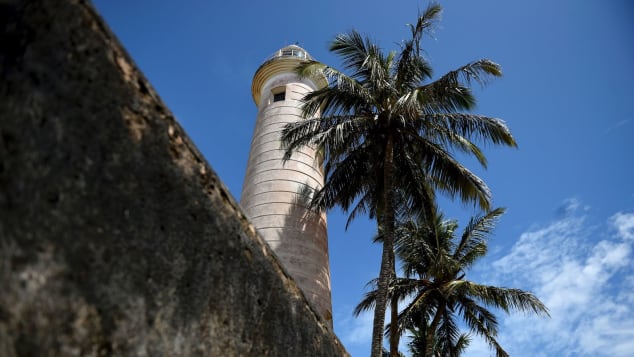
Galle Fort is a UNESCO world heritage site and well-known tourist attraction.
ISHARA S.KODIKARA/AFP/Getty Images
Sitting on the southwestern coast of Sri Lanka, the walled town of Galle owes its historic atmosphere to many centuries as an important trade port.
The UNESCO-listed fortress has lived through three rounds of colonial rulers -- beginning with the Portuguese from 1505-1658, then the Dutch from 1658-1796 and, finally, the British from 1796-1948.
These days, many of the old warehouses and merchant houses have been converted into museums, boutique stays, shops, restaurants and bars.
The dining scene is particularly exciting, with highlights including popular Fort Printers -- built inside an 18th-century mansion and known for its fresh seafood -- or Hoppa for excellent Sri Lankan curries and egg hoppers (dome-like pancakes).
Zhouzhuang, China
Historic Zhouzhuang is home to several ancient sites.
Shutterstock
While Suzhou, west of Shanghai, might steal the limelight as the most famous water town in China, Zhouzhuang is said to be China's oldest.
Built over 900 years ago during the Ming and Qing Dynasties, the beautiful river town feels like a living museum -- picture whitewashed Chinese houses, quiet canals and arched stone bridges that would fit perfectly in a landscape painting.
Mawlynnong, India
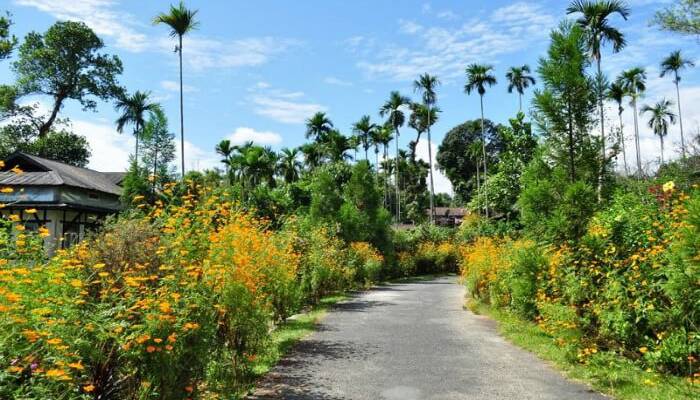
The unspoilt forests of Meghalaya, India are home to a marvel of human ingenuity: the living root bridges.
Mawlynnong, located in the East Khasi Hills of northeastern India, has been named the "Cleanest Village in Asia" by various publications.
The village lives up to its reputation thanks to the Khasi families -- a matrilineal, ethnic community -- who call the town home and take great pride in keeping their village pristine.
They also cultivate abundant, meticulously pruned gardens that are famous across India.
As you might expect in the region's cleanest city, natural beauty is a major draw.
Ghandruk, Nepal

Take a 60 second vacation in Nepal where the stunning Himalayan mountain range is a huge draw for adventure tourists.
A mountain village in the Himalayan region of Nepal, Ghandruk (also known as Stone Village) sits more than 2,000 meters above sea level.
Only accessible on foot, the village is about a five-hour hike from Pokhara, a lakeside city in central Nepal that serves as a starting point for the popular Annapurna Circuit.
Ghandruk welcomes hikers with traditional tea houses, a mountain-top temple, horseback riding and cultural experiences which provide a peek into the lifestyle and customs of the Gurung people who reside here.
Members of this Nepalese tribe have served in the British Army's Gurkha regiments during many conflicts and there's a museum in the village which provides lots of fascinating cultural and historical insights.
It's a place you could stay for a few hours or a few days, to soak up the traditional atmosphere and admire the Himalayan scenery -- with Mount Annapurna, Machhapuchhre and Himalchuli all within view.
Sai Kung, Hong Kong
The town of Sai Kung in the New Territories of Hong Kong is lined with seafood restaurants.
Shutterstock
Hong Kong's northeastern coastline never fails to surprise first-time visitors.
Instead of dense high-rises and traffic, the city's "green lung" is marked by undulating mountains, lush islands and beautiful coastal villages like Sai Kung.
About a 45-minute drive from Central, Sai Kung sits right on the water and plays host to an array of cafes, bars and shops -- all within just a few blocks.
The town's three-story shophouses, colorful "sampan" fishing boats, mom 'n' pop bakeries and leisurely pace make visitors feel at ease.
Never more than a five-minute walk away, the waterfront promises great views and a memorable dining experience at one of the many open-air seafood restaurants.
Among the bunch, Michelin-starred Sing Kee is a long-time crowd pleaser known for its kaleidoscopic decor, steamed scallops with vermicelli, and extensive abalone menu.
Phuket Town, Thailand
Phuket's Old Town is filled with Sino-Portuguese shophouses.
Shutterstock
Though most famous for its beaches, the Thai island of Phuket offers ample opportunities for cultural immersion as well.
The historic old quarter of Phuket Town, located in the center of the island, is lined with Sino-Colonial style shophouses, built during the island's tin-mining boom of the 18th and 19th centuries.
There are plenty of hip shops, cafés, restaurants and bars, including the batik shops along Thalang Road run by ethnic Malays and Indians. The area is also filled with Chinese temples, crumbling mansions, cultural museums and a nunnery.
edition.cnn.com
